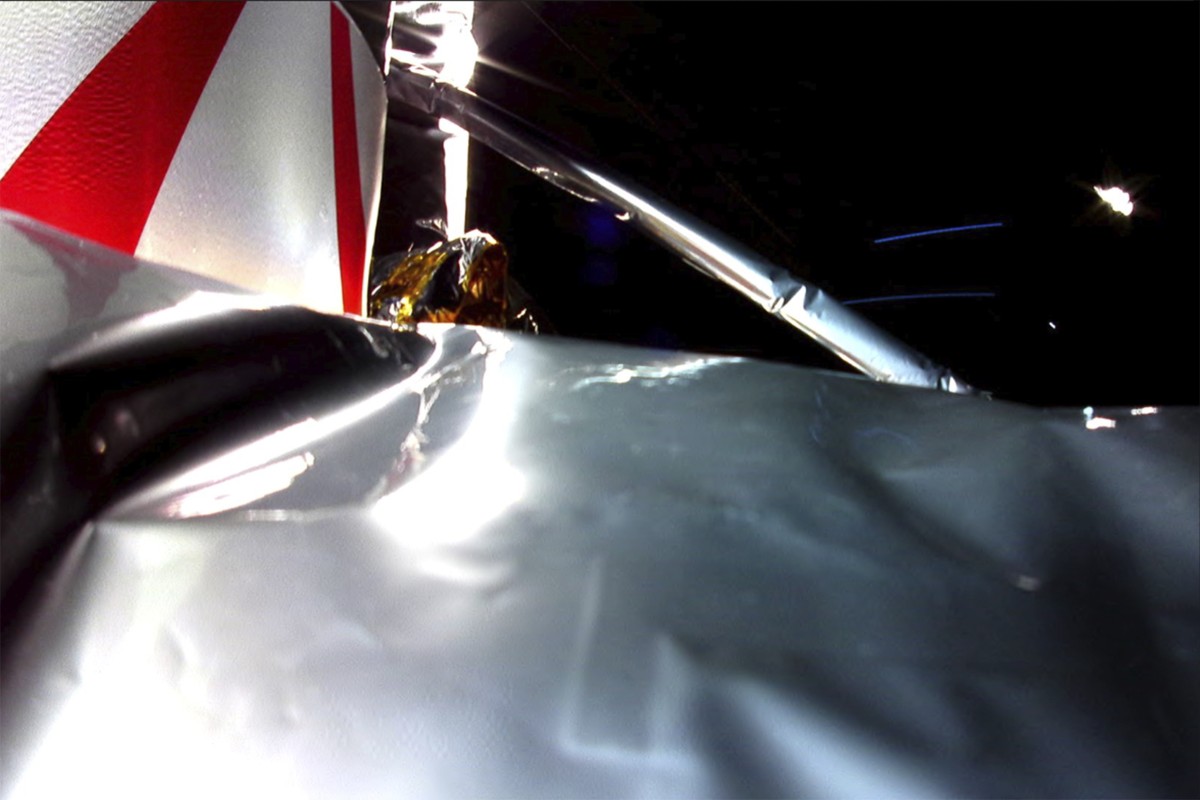
The moon seems out of America company’s reach as propulsion failure threatens private lander mission
- First US landing attempt in over half a century in trouble as spacecraft developed a ‘critical’ fuel leak just hours after launch
- Next month, Elon Musk’s SpaceX will provide the lift for a lander from Intuitive Machine
 In this image released by Astrobotic Technology, an image from a mounted camera shows a disturbed section of insulation on the Peregrine lander. Photo: AP
In this image released by Astrobotic Technology, an image from a mounted camera shows a disturbed section of insulation on the Peregrine lander. Photo: APThe first US moon landing attempt in more than 50 years appeared to be doomed after a private company’s spacecraft developed a “critical” fuel leak just hours after Monday’s launch.
Pittsburgh-based Astrobotic Technology managed to orient its lander toward the sun so the solar panel could collect sunlight and charge its battery, as a special team assessed the status of what was termed “a failure in the propulsion system.”
It soon became apparent, however, that there was “a critical loss of fuel,” further dimming hope for what had been a planned moon landing on February 23.
China reaches for the stars, launching youngest-ever group of astronauts into space
“We are currently assessing what alternative mission profiles may be feasible at this time,” the company said in a statement.
The problem was reported about seven hours after Monday’s predawn lift-off from Cape Canaveral Space Force Station. United Launch Alliance’s Vulcan rocket provided the lift for Astrobotic’s lander, named Peregrine, putting it on a long, roundabout path to the moon.
A propulsion system problem “threatens the ability of the spacecraft to soft land on the moon,” the company said. The lander is equipped with engines and thrusters for manoeuvring, not only during the cruise to the moon but for lunar descent.
Late Monday, Astrobotic released a photo taken from a lander-mounted camera. The company said it showed a “disturbance” in a section of thermal insulation, and that aligns with what is known so far of the problem.
Astrobotic was aiming to be the first private business to successfully land on the moon, something only four countries have accomplished. A second lander from a Houston company is due to launch next month. Nasa gave the two companies millions to build and fly their own lunar landers.
Before the flight, Nasa’s Joel Kearns, deputy associate administrator for exploration, noted that while using private companies to make deliveries to the moon will be cheaper and quicker than going the usual government route, there will be added risk. He stressed that the space agency was willing to accept that risk, noting Monday: “Each success and setback are opportunities to learn and grow.”
Study Buddy (Explorer): Young Hongkongers over the moon to meet Chinese astronaut Chen Dong
The last time the US launched a moon-landing mission was in December 1972. Apollo 17’s Gene Cernan and Harrison Schmitt became the 11th and 12th men to walk on the moon.
Landing on the moon has long been a series of hits and misses. The Soviet Union and the US racked up a string of successful moon landings in the 1960s and 70s, before putting touchdowns on pause. China joined the elite club in 2013 and India in 2023. But last year also saw landers from Russia and a private Japanese company slam into the moon. An Israeli non-profit crashed in 2019.
Next month, SpaceX will provide the lift for a lander from Intuitive Machines. The Nova-C lander’s more direct one-week route could see both spacecraft attempting to land within days or even hours of one another.